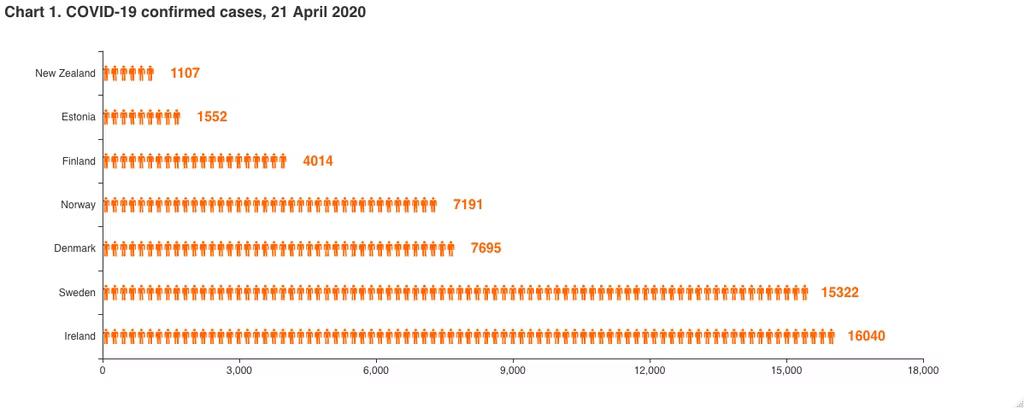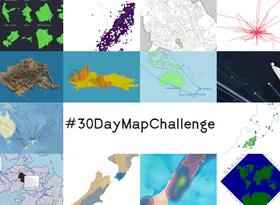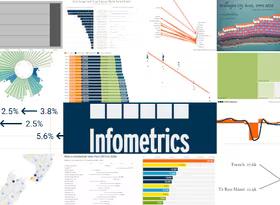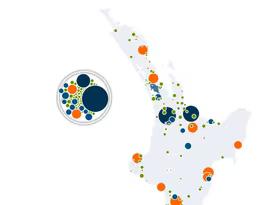Chart of the Month: COVID-19 Infections
New Zealand has almost completed a month of Level 4 lockdown, aimed at halting the spread of COVID-19. And it seems to be working! New Zealanders have endured incredibly tough restrictions, including requirements to stay home, as well as increased risks for essential workers as they ensured that New Zealand remained fed and looked after. The government’s comprehensive reaction has put New Zealand in a firm position to potentially eliminate COVID-19. We’re not out of the woods yet, but the situation is looking very promising as we transition to Level 3 next week.
Aside from the obvious benefits of saving many lives, limiting the spread of infection will enable the economy to recover as fast as possible when the lockdown is lifted. There are many factors that will influence the recovery, but researchers looking at the 1918 influenza pandemic confirm that US cities that limited infections with quick and strong lockdowns recovered economically faster than those that didn’t (Correia et al., 2020).
As some people start to argue that New Zealand’s low infections suggest that we over-reacted, rather than had a very effective reaction, it is useful to consider counterfactuals by comparing with other countries. Of course there is a lot of uncertainty when comparing between countries due to variations in infected traveller numbers, population density, rates of testing, and more, but the general trends are instructive.
Estonia has roughly a quarter of New Zealand’s population and implemented a lockdown before New Zealand, but it was not quite as restrictive at first; restrictions were loosened when new cases started dipping and then cases went up again. Finland, Norway and Denmark have similar populations to New Zealand and enacted similar sorts of lockdowns, though not all at the same relative time; they have had several times the infections New Zealand has, but similarly appear to be getting the virus under control. Ireland has a similar population to us and was much later to implement restrictions; consequently the virus has spread much further in the population and infections are not yet dropping. Sweden, with double New Zealand’s population, took a much looser voluntary approach: it has still not implemented a full lockdown and cases continue to rise.
Chart 1 shows the number of confirmed cases (ie not counting “probable” cases) for each of these countries as of 21st April, with each figure representing approximately 190 people. If our government had not reacted in the way it did, as early as it did, the number of infected people could easily be ten times higher. Not only would many more people be dead or seriously ill in hospital, it would make the economic recovery that much harder.

To further put our low COVID-19 cases in perspective, mathematical modelling suggests that without any controls the virus would spread widely throughout the population. Researchers at Te Pūnaha Matatini suggest that with no lockdown the current number of cases could “optimistically” be several thousand more by this point and rising by hundreds each day (Plank et al., 2020). University of Otago academics suggest that, uncontrolled, the virus could eventually spread to 3,230,000 people – 65% of the population (Telfar Barnard et al, 2020).
References
Correia, Sergio, Stephan Luck and Emil Verner (10 April 2020). Pandemics Depress the Economy, Public Health Interventions Do Not: Evidence from the 1918 Flu. Available at SSRN: http://dx.doi.org/10.2139/ssrn.3561560.
Plank, Michael J., Rachelle N. Binny, Shaun C. Hendy, Audrey Lustig, Alex James and Nicholas Steyn (9 April 2020). A Stochastic Model for COVID-19 Spread and the Effects of Alert Level 4 in Aotearoa New Zealand. Te Pūnaha Matatini.
Telfar Barnard, Lucy, Nick Wilson, Amanda Kvalsig, and Michael Baker (27 February 2020). Modelled Estimates for the Spread and Health Impact of Covid-19 in New Zealand: Revised Preliminary Report for the NZ Ministry of Health. Ministry of Health.








